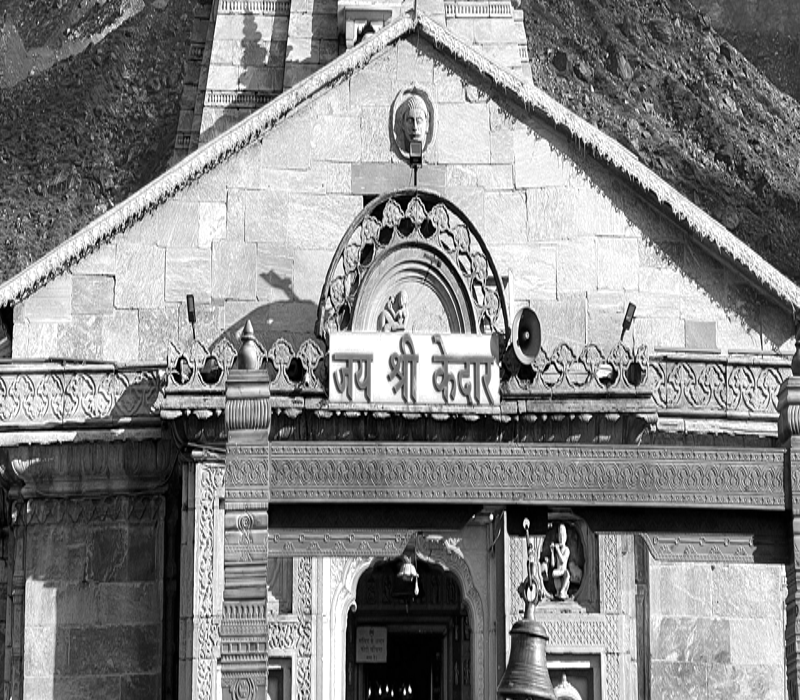- Offices: Dehradun | Dwarka New Delhi
Nestled in the picturesque Kumaon region of Uttarakhand, India, the Lakhudiyar Rock Paintings offer a fascinating glimpse into the ancient art and history of the region. Located near the town of Almora, these prehistoric rock paintings are an invaluable archaeological treasure and a testament to the rich cultural heritage of the area. The rock art at Lakhudiyar showcases the creativity and artistic skills of early human civilizations, leaving visitors mesmerized by the enigmatic symbols, figures, and narratives etched on the rocks.
In this comprehensive guide, we will delve into the history, significance, artistic characteristics, nearby attractions, and practical details to make your visit to the Lakhudiyar Rock Paintings an enlightening and unforgettable experience.
Introduction to Lakhudiyar Rock Paintings:
Lakhudiyar, which translates to "a hundred thousand caves" in the local language, is an archaeological site located in the Almora district of Uttarakhand. The site is famous for its ancient rock paintings, dating back to the prehistoric era. The rock shelters at Lakhudiyar served as abodes for early humans, and their artistic expressions on the cave walls have survived the test of time, providing insights into their lives, beliefs, and culture.
Historical Significance:
The history of the Lakhudiyar Rock Paintings can be traced back to the Mesolithic and Neolithic periods, making them thousands of years old. The paintings are believed to have been created by the early inhabitants of the region, depicting scenes from their daily lives, rituals, hunting, and their connection with nature and the spiritual realm.
Artistic Characteristics:
The rock art at Lakhudiyar showcases a blend of artistic styles and themes. The paintings are primarily executed in red and white colors, derived from natural pigments, and the artists used fingers, brushes made of animal hair, or twigs to create these intricate artworks. The motifs include human and animal figures, hunting scenes, ritualistic depictions, geometric patterns, and symbols with possible spiritual significance.
Archaeological Exploration:
Lakhudiyar was first identified as an archaeological site in the early 20th century when British researcher Yashodhar Mathpal discovered the rock paintings. Since then, various researchers, archaeologists, and historians have conducted studies and excavations at the site to decipher the meanings and cultural context of the rock art.
Nearby Attractions:
Almora and its surroundings offer several attractions for visitors to explore:
Nanda Devi Temple: An ancient Hindu shrine dedicated to Goddess Nanda Devi, offering spiritual solace in the lap of the Himalayas.
Kasar Devi Temple: Known for its spiritual significance and breathtaking views of the Himalayan peaks.
Bright End Corner: A popular viewpoint providing stunning sunsets and panoramic vistas of the surrounding hills.
Chitai Golu Devta Temple: Famous for its unique tradition of offering bells, the temple is dedicated to Golu Devta, the God of Justice.
Best Time to Visit:
Lakhudiyar and Almora can be visited throughout the year. The summer months from March to June offer a pleasant climate, making it an ideal time for a visit. The monsoon months from July to September bring lush greenery but may witness occasional rainfall. The winter months from October to February offer cold weather, but the region's cultural charm remains unchanged.
How to Reach:
Almora is well-connected by road from major cities and towns in Uttarakhand and neighboring states. The nearest railway station is Kathgodam, and the nearest airport is Pantnagar Airport. From Kathgodam or Pantnagar, Almora is approximately a three to four-hour drive.
Accommodation Options:
Almora offers a variety of accommodation options, ranging from budget guesthouses to luxury resorts. Visitors can choose accommodation based on their preferences and budget.
Responsible Tourism:
As an archaeological site, Lakhudiyar calls for responsible tourism practices. Visitors are encouraged to respect the historical significance of the rock paintings, avoid touching or defacing the artwork, and follow guidelines set by local authorities to preserve the cultural heritage of the region.
In conclusion, the Lakhudiyar Rock Paintings in Almora offer a unique opportunity to travel back in time and connect with the ancient civilizations that once thrived in the Kumaon region. The prehistoric rock art provides a glimpse into the lives, beliefs, and artistic expressions of early human societies, leaving visitors in awe of their creativity and ingenuity. A visit to Lakhudiyar allows travelers to witness the beauty of ancient art and immerse themselves in the cultural heritage of Almora. As you explore the rock shelters and contemplate the enigmatic symbols, you will be transported to an era when art was etched on stone, transcending time and connecting generations.

